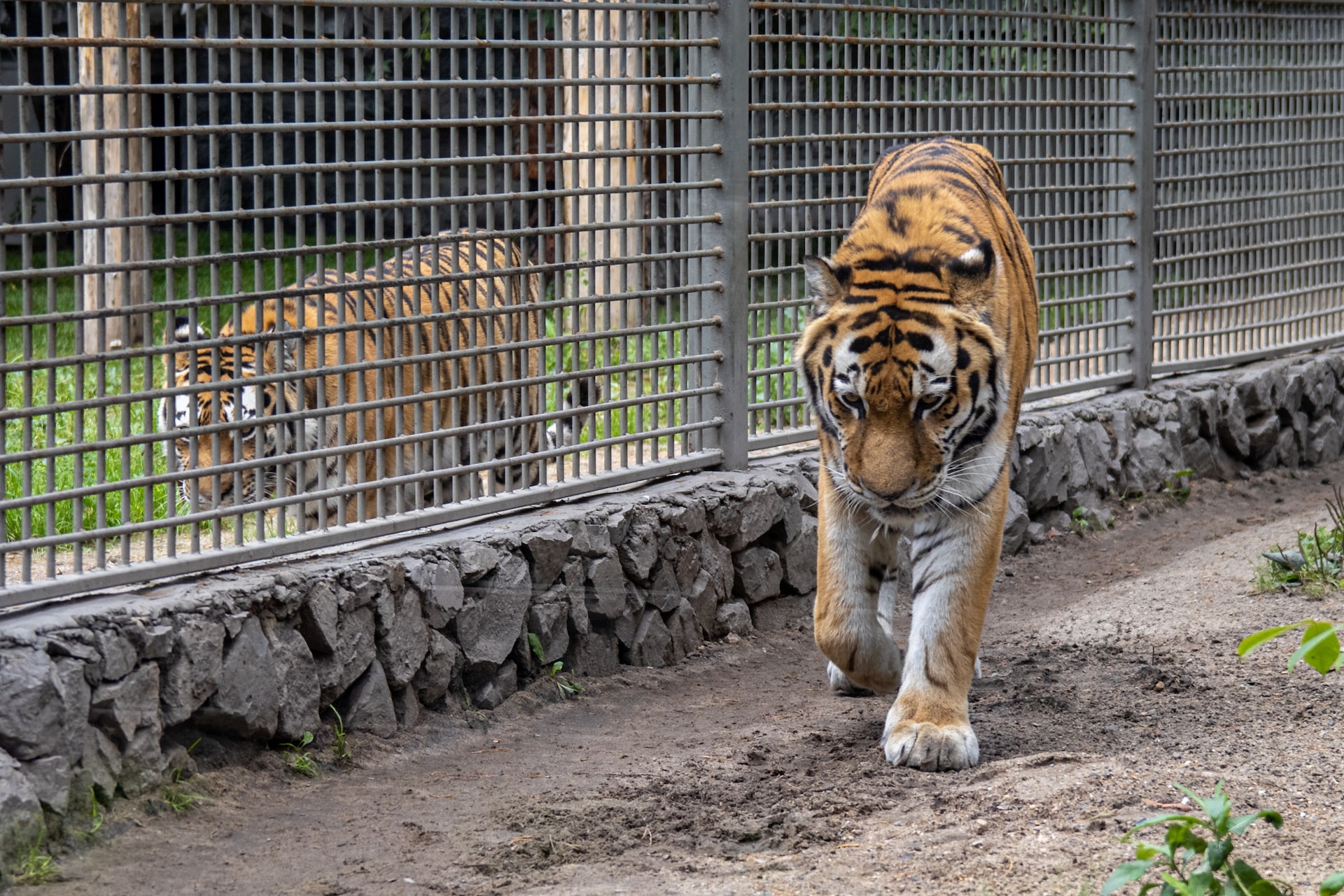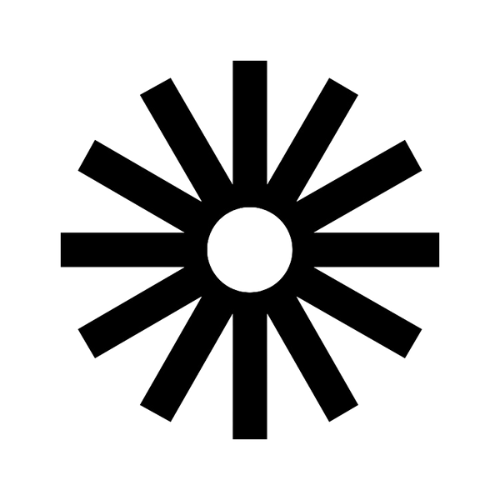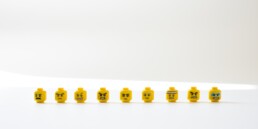A Call to Rebellion: A New Way of Thinking About Depression, Anxiety & Burnout

—
Whenever I write on the subject of depression, I feel it’s important to make it clear I’m not a doctor and I’m not attempting to play one on the internet. The ideas presented here are simply me “thinking out loud” in an attempt to make sense of the world. If you’re experiencing depression, please talk to someone or seek professional help. And also know that you are wonderful and valuable and beautiful and the feelings you’re experiencing are temporary. If you feel like you have no one to talk to right now, you can always DM me on Twitter for a chat.
—
Imagine you’re at a zoo. As you approach the enclosure for the resident Bengal tiger, you notice the majestic animal is pacing back and forth. The tiger’s head hangs low, its movements seem sluggish and you notice a well-worn path in the dirt, a path the tiger has paced over and over again.
You spend a few minutes observing the tiger as it continues to pace, back and forth, from one side of its artificial enclosure to the other.
Something feels off about this to you. It’s clear the tiger is anxious or depressed, or suffering from what scientists call “learned helplessness”. You’ve heard that caged animals can behave in this way, but this is your first time seeing it.
It’s not hard to understand why the tiger seems withdrawn.
She’s been removed from her natural environment. Injected with sedatives. Experienced trauma. Locked inside a small, artificial enclosure. Fed processed (already dead) food. Unable to roam freely. Forced to adjust to a way of living that doesn’t align with a tiger’s natural instincts.
Of course she’s unhappy, you think.
The solution to the tiger’s suffering seems obvious, too.
You don’t immediately think, “This tiger needs to go to tiger therapy and get a prescription for tiger anti-depressants so it can feel better about living in a zoo and stop feeling sad about having to suppress its wild instincts”. You don’t think the tiger needs to “get over it” and make the most of its situation. You don’t consider showing the tiger a YouTube clip of Tony Robbins explaining the power of positive thinking.
As you watch the tiger pacing, you can understand its situation is not its fault and its response is entirely reasonable.
You conclude that the best thing for the tiger would be to set it free in its natural environment, to allow it to pursue its true calling, rather than attempting to force it to adjust to a sub-optimal way of life.
Imagine if we took the same approach to human suffering.
The only sane response
When a person is depressed, anxious or burned out, society sees the symptoms, or person, as a problem to be fixed.
Depression and anxiety are considered “disorders” and the most common remedy is pharmaceutical medication.
The goal here is to trick a person’s biology into feeling OK about their life and the world they live in, even if their life and world doesn’t change.
But zoom out and perhaps we’d see that the depressed person or the burned out person is in a zoo enclosure much the same as the tiger.
And if we were to extend the empathy we have with the tiger to the person, we may see there are valid reasons why they’re exhibiting symptoms of depression or dis-ease.
The idea I’m advancing here is, like the tiger, a depressed person’s behaviour may not only be reasonable, but a perfectly natural response to sub-optimal conditions.
In his 2008 essay, Mutiny of the Soul, Charles Eisenstein presents a theory in which anxiety, depression and dis-ease are the body’s rebellion to the “wrongness” in the world.
“… there is another, radically different way of seeing fatigue and depression that starts by asking, “What is the body, in its perfect wisdom, responding to?” When would it be the wisest choice for someone to be unable to summon the energy to fully participate in life?
The answer is staring us in the face. When our soul-body is saying No to life, through fatigue or depression, the first thing to ask is, “Is life as I am living it the right life for me right now?” When the soul-body is saying No to participation in the world, the first thing to ask is, “Does the world as it is presented me merit my full participation?”
What if there is something so fundamentally wrong with the world … and the way of being offered us, that withdrawal is the only sane response?“
Re-framing depression as rebellion
Depression is often described as a chemical imbalance in the brain.
Burnout and anxiety are symptoms of an overloaded autonomic nervous system.
Eisenstein is suggesting that these responses are a feature rather than a bug. They are mechanisms for withdrawing our full participation in a way of life that is out of alignment with our natural instincts (intuition, soul, heart, purpose).
Eisenstein describes the withdrawal as a “heroic, intuitive rebellion against the spirit-wrecking machine”.
For the tiger, the spirit-wrecking machine is a caged enclosure in a zoo and the lifestyle that comes with it.
For us, it’s the societal confines in which we’re expected to operate, which are built upon stories and ideologies about how the world works and how we should live.
I don’t want to paint too grim a picture of the world, but here’s an example of the human zoo enclosure (often literally referred to as “the rat race” or “The Matrix”) many of us will be familiar with:
We live in concrete jungles. We don’t know our neighbours. We commute on busy highways to jobs we don’t like. We work 9-5 on unfulfilling tasks. We eat processed foods devoid of nutrients and pumped full of harmful chemicals. We tune into the news: The Amazon is burning. The climate is collapsing. War is being waged. The economy is tanking. We’re in the midst of a pandemic. Another school shooting. Another terrorist attack. Another natural disaster. Another reason to be afraid. Are all of these things connected? We scroll social media and watch Netflix to distract ourselves. We drink alcohol and use drugs to numb our pain. Our social networks are our community. Our followers are our friends. Deep inside, we feel that life was meant to be so much more than this.
Like the tiger, we dream of the savannah, the rainforest and the mangrove swamp. We want to hunt and fuck and bask in the sun. We want to climb trees and drink from freshwater streams. We want to pursue our true calling and live to our full potential.
I believe this desire is in every one of us. And when it’s suppressed long enough, we rebel. Sometimes it manifests in a fiery blaze of addiction, violence, or mid-life crises. But more often than not, the rebellion manifests as depression, anxiety, fatigue, dis-ease – a quiet withdrawal from full participation in life.
We become conscientious objectors to a way of being we don’t believe in.
There are always exceptions. I’m well aware that depression is often an acute response to a difficult experience, such as death, a break-up, illness, or accident. In these instances, it’s easier to point at a cause.
But the drastic rise in mental illness in recent years feels more like a slow creep of debilitating discontent pervading the lives of more and more people.
I think the “heroic rebellion” re-frame is important because depression, anxiety, dissatisfaction, burnout, and similar conditions are typically seen as signs of weakness, unbefitting of a well-adjusted person in the modern world.
But rebellion, on the other hand, takes strength. In a podcast interview, Eisenstein went as far to say withdrawal from a life you’re “not supposed to be living … is actually a sign of spiritual health”.
The philosopher Jiddu Krishnamurti puts it this way:
“It is no measure of health to be well-adjusted to a profoundly sick society.”
Perhaps it can also be said that it’s a sign of health (or not a sign of illness) to be maladjusted to a profoundly sick society?
This re-frame doesn’t change the fact that depression and related conditions can be deeply unsettling experiences, often described as dark nights of the soul.
But viewing these experiences as an intelligent rebellion from within offers a new way of moving through them – an invitation to a new story.
Want to get life-altering ideas in your inbox?
Sign up for the newsletter here.
The invitation to aliveness

What does this re-frame mean in practical terms?
If you resonate with the idea of “heroic rebellion” you can start to see your despair as an invitation.
That nagging feeling of dis-ease is asking something of you. It’s a deep yearning for more than what you’ve settled for up to this point. To rebel – quietly at first and then emphatically – against the way of life that’s been holding you back and dragging you down.
The invitation is for you to step outside the zoo enclosure and see the savannah. The savannah is a metaphor for your true calling, your higher purpose, a more beautiful world our hearts know is possible.
“When you find the right life, when you find the right expression of your gifts, you will receive an unmistakable signal. You will feel excited and alive,” Eisenstein says.
But how do you take this step from sorrow and exhaustion to excitement and aliveness?
Trust
Eisenstein says the first step is self-trust. You need to believe that your withdrawal is a call to something more, not a fault that needs to be fixed.
“Trust your innate belief that you are here on earth for something magnificent, even when a thousand disappointments have told you you are ordinary. Trust your idealism, buried in your eternal child’s heart, that says that a far more beautiful world than this is possible. Trust your impatience that says “good enough” is not good enough. Do not label your noble refusal to participate as laziness and do not medicalize it as an illness. Your heroic body has merely made a few sacrifices to serve your growth.”
Rest
Every great accomplishment or adventure requires periods of rest. If you accept your depression as a call to rebellion, take this time to rest, reflect, be still, and prepare for what’s to come. You’re going to need energy and clarity for the journey ahead.
It’s a time to investigate how you feel, what’s contributing to your state of being, and what you feel called to do. What changes need to unfold as you move through this phase? What is going to allow you to be fully alive? You may like to return to Eisenstein’s question above: “Is life as I am living it the right life for me right now?”
It’s a time to lean on mindfulness and somatic practices that cultivate deeper awareness of your inner world and help to regulate your emotional state. In many ways, this is a kind of death. You need to retreat deep into the darkness to reemerge from it.
“We have to learn to die in each moment in order to be fully alive.” – Thich Naht Hanh
Push
Eisenstein describes the next phase as a “birth-push”. It is initiated by hope and optimism, your new-found understanding that a new way of being is possible.
A push calls for action. It’s a time for acting upon the insights gained during your period of rest and reflection. In practical terms, it may be changing your work, habits, environment, relationships. It may be finally having that difficult conversation you’ve been avoiding. It may be seeking help from a therapist, mentor or healer. You’ll know what you’re being called to do.
Ultimately, this is the act of stepping outside the zoo enclosure and onto the savannah, embracing the fullness of life that has evaded you until this point.
“Crises in our lives converge and propel us into a new life, a new being that we hardly imagine could exist, except that we’d heard rumors of it, echoes, and maybe even caught a glimpse of it here and there.”
What does this look like for you?
Rebirth
This is the more beautiful world. The heaviness of the old world has lifted. You recognise this place by “the unmistakable signal” – excitement and aliveness. Once you take this step, you’ll see many others who’ve already gone before you and they can help guide you.
Of course, it’s the same physical world you’ve always inhabited, but the the barriers have been removed. You move through the world differently, with a lightness and confidence that only comes from going through this process of renewal.
The cycle of courage
Throughout our lives, we’ll encounter many enclosures. Most of them we build ourselves without even realising it, while others are erected by society, constructed by people close to us, or appear mysteriously following a traumatic experience. Some are just there for no apparent reason, little reminders of things we still have to work through.
Each time, we can choose hopelessness or courage. We can suppress our deepest desires and attempt to adjust to the circumstances that imprison us. Or we can answer the call to rebellion and set ourselves free.
I realise this article has been deeply metaphorical and not everyone will resonate with this way of thinking about psychological dis-ease. But if you’ve read this far, I can assume that you’ve connected with at least some of the ideas shared here.
Metaphors are used to transcend literal interpretations. Hopefully, you can map some of these ideas onto your own life, discover your own meanings, and apply the learnings in your own way to move through the various challenges and enclosures you encounter on your journey.
This is my no means a complete solution for depression or burnout, it’s simply a new way of thinking about and moving through them.



